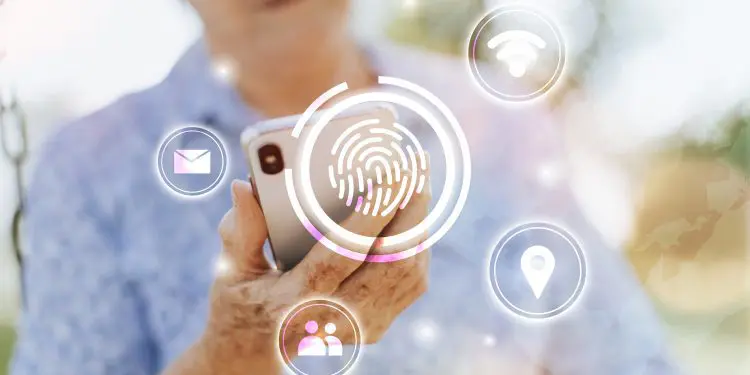
Digital identification is an inevitability, as evidenced by the accelerating adoption of digital driver’s license programs across the U.S. While consumers are beginning to understand the security and convenience benefits of digital IDs, many financial institutions aren’t prepared to support the emerging technology.
The Promise of Digital IDs: Reduced Fraud and Efficient ID Proofing, the new report by Kevin Libby, Fraud and Security Analyst at Javelin Strategy & Research, examines the advantages of digital identification and the challenges it presents for consumers and financial institutions.
The Coming Wave
Consumers crave convenience and security, and digital IDs have become increasingly popular because they can deliver both aspects. Recent data showed a 4% year-over-year increase in the number of U.S. consumers who would support a national digital identification program, so long as it is voluntary and secured by biometric data.
Digital ID advocacy is even higher among consumers who experienced identity fraud in the past, or had their personal identifiable information exposed in a breach. That implies those consumers believe digital credentials are more secure than physical IDs.
“Financial institutions and service providers, along with any other company that relies on effective and efficient identity verification, should prepare for the coming wave of digital identification issuance,” Libby said. “They will have to develop systems to interact with those credentials and keep those processes up to date.”
Privacy Concerns
There are privacy concerns with digital IDs. A physical ID is under a person’s control, so they are likely to know if it has been lost or stolen. On the other hand, digital credentials could be accessed, and their information could be captured without a customer ever knowing it.
Some people might be reluctant to adopt digital IDs because they don’t want their activity tracked. It’s why most consumers prefer a decentralized digital ID model, where the credential is fully contained on a mobile device instead of a government server. That would mean the digital ID is only as secure as its wallet, however.
One of the privacy benefits of the decentralized model is users only share pertinent information with retailers. When a customer buys an age-restricted product like alcohol, they don’t have to present identification that details their name, address, and exact date of birth. The retailer could scan the digital ID and get a simple confirmation the customer is of the proper age for the purchase.
As more organizations begin to trust digital IDs, fewer companies will need to collect and store personal information. Many organizations will then become much less susceptible to data breaches.
New Types of Fraud
Even though large-scale breaches might be mitigated, criminals will target the remaining personal data repositories. That includes government systems, banks, and other organizations that have the legal requirement to capture personal information.
Financial institutions must enhance security protocols and protect servers that house personal information because they will increasingly be targeted in the future. Banks often already have strong security measures, but criminals will test those defenses if institutions are one of the few sources of personal financial data.
“Another downside of the decentralized digital ID model is it could open avenues for new types of fraud,” Libby said. “There have already been cases where criminals drugged an individual and used their biometrics to unlock their phone. Once they have access, criminals can get to all the person’s accounts and drain them. It might be less scalable fraud, but it’s just as impactful for consumers.”
Because of the new fraud trends, organizations can’t become totally dependent on digital IDs as the sole form of verification.
Onboarding Friction
If the identity verification process becomes too intense, especially during the onboarding phase, consumers might abandon the institution entirely. For example, a customer might not have their ID available, or they don’t want to take a picture of their ID and upload it. Those are privacy- and convenience-centered friction points that cause people to drop out of the onboarding process.
“If banks don’t create pathways for users to bypass friction points by accepting digital IDs automatically in their website or mobile application, consumers might move on,” Libby said. “It could cause financial institutions to lose market share, and it could be as much as 3% to 6% of consumers who depart each year.”
Even though digital IDs are likely to become the standard, physical identification won’t be eliminated. There will always be consumers who don’t have mobile devices that support digital IDs. Physical IDs will also be a backup if digital credentials are unavailable or corrupted. Consequently, financial institutions should develop two separate pathways to accommodate all users.
Like Wildfire
Despite privacy and security concerns, consumers are likely to continue to adopt digital IDs. Perhaps the biggest hurdle to widespread adoption is many customers don’t know digital identification is available. Once consumers understand a digital driver’s license, for example, is issued in their local geography, the convenience benefits will likely spur them to acquire it.
“Not only should banks and credit unions prepare for digital IDs, but they should also implement multi-layered identity verification systems,” Libby said. “It’s imperative to act quickly, because digital credential adoption is accelerating. As more and more consumers understand the use cases for digital IDs, it will take off like wildfire.”























